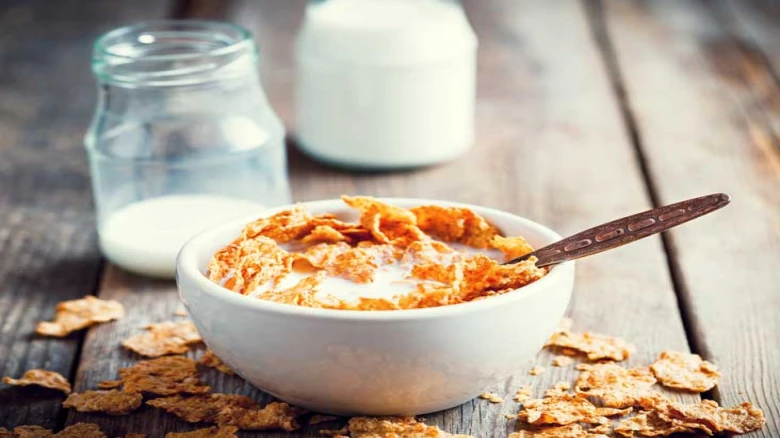When you consume a large amount of sugar, particularly from a highly processed, low-fibre cereal, your...
Digital Desk: Nowadays, ready-to-eat breakfast cereals are a common choice. They come in a range of exquisite flavours and are quick, versatile, and delicious. Many people eat cornflakes to feed themselves in the morning since they are nutritious, flavorful, and help people lose weight. But, what they don't know is that cereal is one of the most processed foods, loaded with added sugar. When you consume a large amount of sugar, particularly from a highly processed, low-fiber cereal, your blood sugar levels quickly rise. To control this spike and allow the glucose to be taken by the body’s cells for energy, your body releases the hormone insulin from your pancreas.
Major Side Effects Of Breakfast Cereal:
1. Cereals contain high fructose corn syrup (HFCS), which has a glycemic index that makes it inappropriate for daily consumption.
2. Cereals are a high-carb, low-protein alternative for breakfast that could make you feel hungry and lead you to eat more during the day.
3. Even though cereals are low in fat, their high sugar content promotes insulin spikes and lowers glucose tolerance.
4. Cereal consumption has been linked to an increase in type 2 diabetes cases.
5. Consuming cereals on a regular basis for weight loss may allow you to consume fewer calories, but it has a negative impact on your body's ability to handle sugar intake.
The majority of cereals are made from refined grains, which are lower in fibre and nutrients than whole-grain cereals. The presence of fibre in your food slows the rate at which sugars are taken into your system, reducing the need for an insulin increase.
Make sure the breakfast cereal you eat is both low in sugar and high in fibre. Before eating, pay attention to the serving sizes and review the ingredient list. You can improve your cereal even more by adding your own protein.

Leave A Comment